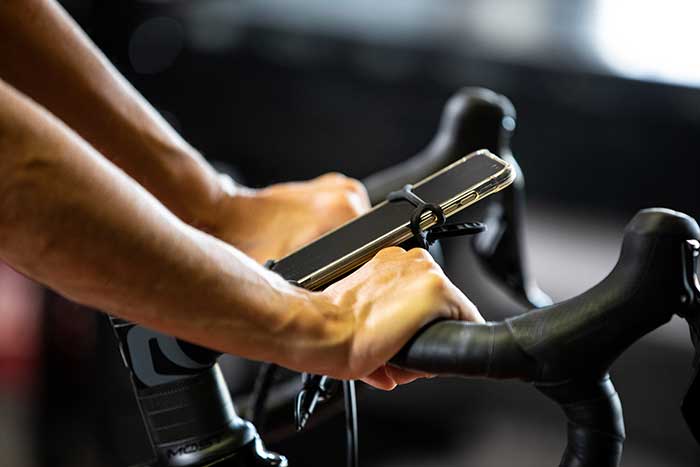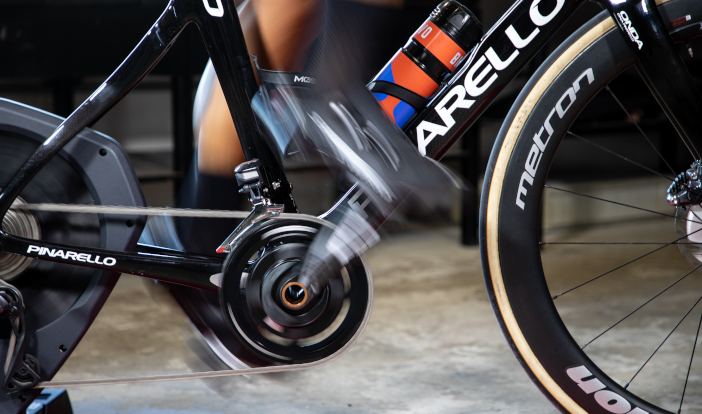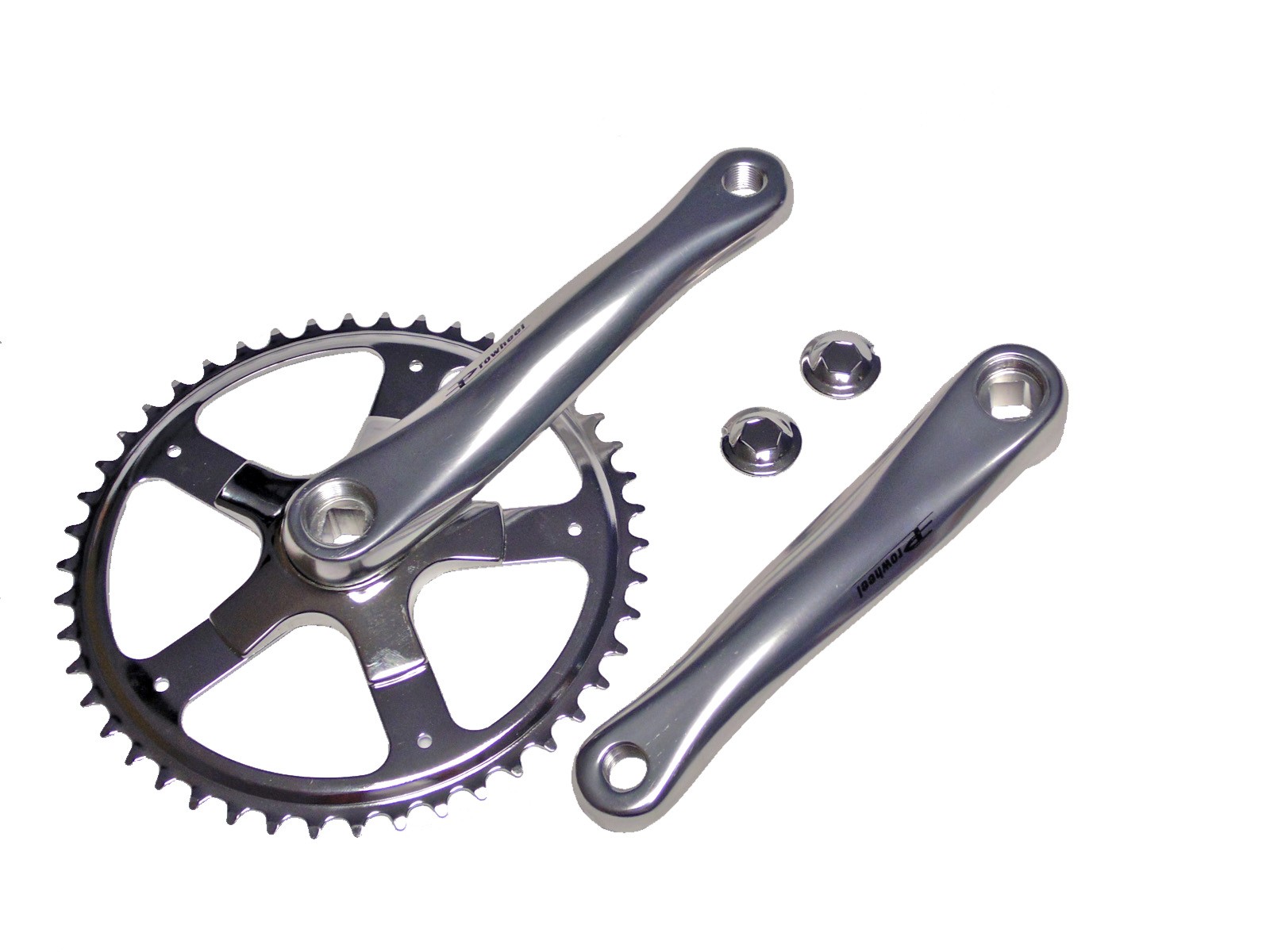The advice provided by the technical literature on the length of crankarms does not always correspond to what can be put into practice in reality. It is important that science and ‘feeling’ correspond.
In this first article, we will discuss the length of the cranks, a topic that is in fashion nowadays. We will take a brief look at scientific research on this subject and consider our experience working with athletes of all levels, in particular triathletes. We will try to give a short summary of the scientific publications and try to draw some practical conclusions.
When we consider the old formulas used to determine the length of the crank, we find that they refer to the dimensions of the body. We will try to reason the other way around. We will take as an example Frodeno, using data from an article from Training Peaks. His saddle height is around 860mm and his crankarms 172.5. From this we can infer a proportion which we will adapt to an athlete at the other end of the spectrum, such as Mirinda Carfrae who is much smaller. She has a saddle height of 670mm and uses crankarms of 165mm. If we were to follow Frodeno’s proportions, Carfrae should use a crank of 135mm. If we however use Carfrae’s measures, Frodeno would be using crankarms of 210 mm. Also, when we take as an example a person of normal height using cranks of 170mm (the most commonly used) and we apply this to Frodeno and Carfrae, the length of their cranks would be respectively 195 mm and 150 mm. This goes to show that if you calculate the length of the crankarms using only anatomical proportions the differences among athletes are too big to allow us to find a correct method.
Various researches tried to shed light on what the ideal crank length could be and above all, why. One of the key studies (Martin et Al., 2001) has shown that in a range of cranks from 120 to 220 mm the differences in mechanical power produced is 4% and as such not very significant. The differences in mechanical power is significant when confronting 120 mm with 145 mm cranks and 170 with 220 mm (p<0.05) cranks. The goal of the study was to evaluate the influence of various parameters of the crank length. In addition, this study demonstrated a greater flexion angle for the hips and knees.
Another important question has been raised by Mileva in 2003 regarding the muscles and joints. With a longer crankarm the foot (pedal) covers a greater circumference. This means that at the same rpm the foot travels a greater distance, meaning more speed. It has been shown that lengthening the crank from 155 to 195 mm (through an intermediate step) has led to an increase of the angle values and the angle velocity of the knee during the flexion and extension (hence the joint torque). An increased activation time (with greater intensity) of the hamstring muscle has also been observed as well as an increased intensity of activation of soleus and tibialis anterior muscles. The latter does not undergo any modifications of the activation time and the same goes for the rectus femoris muscles, while the soleus has a decreased activation time. And, as we all know, you "run with the femoris muscles" once off the bike.
This year we have worked with various athletes, from professionals to amateurs, and all of them reported positive sensations after shortening the crankarm length. This reminds us that in the pyramid of scientific evidence "feeling" lays at the basis, meaning it is considered the least important element.
Incidentally, if we look at the bikes of the top professional athletes in the recent IM South Africa we find Ben Hoffman at 167.5mm, Nils Frommhold at 175mm, McNamee at 172.5, Van Lierde at 175mm, and Daniela Ryf at 172.5mm. This shows that science provides objective indications that we can choose to follow or not, depending on our intuition, and that there is no magic formula which can be generally be applied.
If we unite science with feeling, we can sum up everything in a few words: a shorter pedal crank:
Reduces the stress on the joints and muscles, prevents injuries and supports performance
“Opens up” some angles and as such permits better respiration, nutrition and hydration, and lessens the pressure on the bladder. Vice versa, keeping the same angles can improve aerodynamics by lowering the front of the bike
The diminished pressure on the abdominal zone allows for better perfusion of the lower limbs, reducing the compression of the femoral artery
Facilitates the maintenance of a slightly higher pedaling cadence, when compared to the cadence at similar power output and gear choice
Improves the bike-run transition, causing less muscle strain
Does not create any significant power loss
So, shortening the crankarm (with the necessary precautions) does not create any mechanical disadvantages but opens the door to a host of small improvements.
References:
(1) Mileva K1, Turner D. Neuromuscular and biomechanical coupling in human cycling: adaptations to changes in crank length. Exp Brain Res. 2003 Oct;152(3):393-403. Epub 2003 Aug 1
(2) Barratt PR, Korff T, Elmer SJ, Martin JC. Effect of crank length on joint-specific power during maximal cycling. Med Sci Sports Exerc. 2011 Sep;43(9):1689-97
(3) Martin JC, Spirduso WW. Determinants of maximal cycling power: crank length, pedaling rate and pedal speed. Eur J Appl Physiol. 2001 May;84(5):413-8
(4) Too, D., & Landwer, G. (2000, March). The effect of pedal crank arm length on joint angle and power production in upright cycle ergometry. Journal of Sports Sciences, 18(3), 153-161
(5) Gonzalez, H., & Hull, M. L. (1989). Multivariable optimization of cycling biomechanics. Journal Of Biomechanics, 22(11-12), 1151-1161
(6) Morris, D., & Londeree, B. (1997, October). The effects of bicycle crank arm length on oxygen consumption. Canadian Journal of Applied Physiology, 22(5), 429-438
(7) Sprules, E. (2000). The biomechanical effects of crank arm length on cycling mechanics. SPORTDiscus database

Niklas Quetri
You might also be interested in



